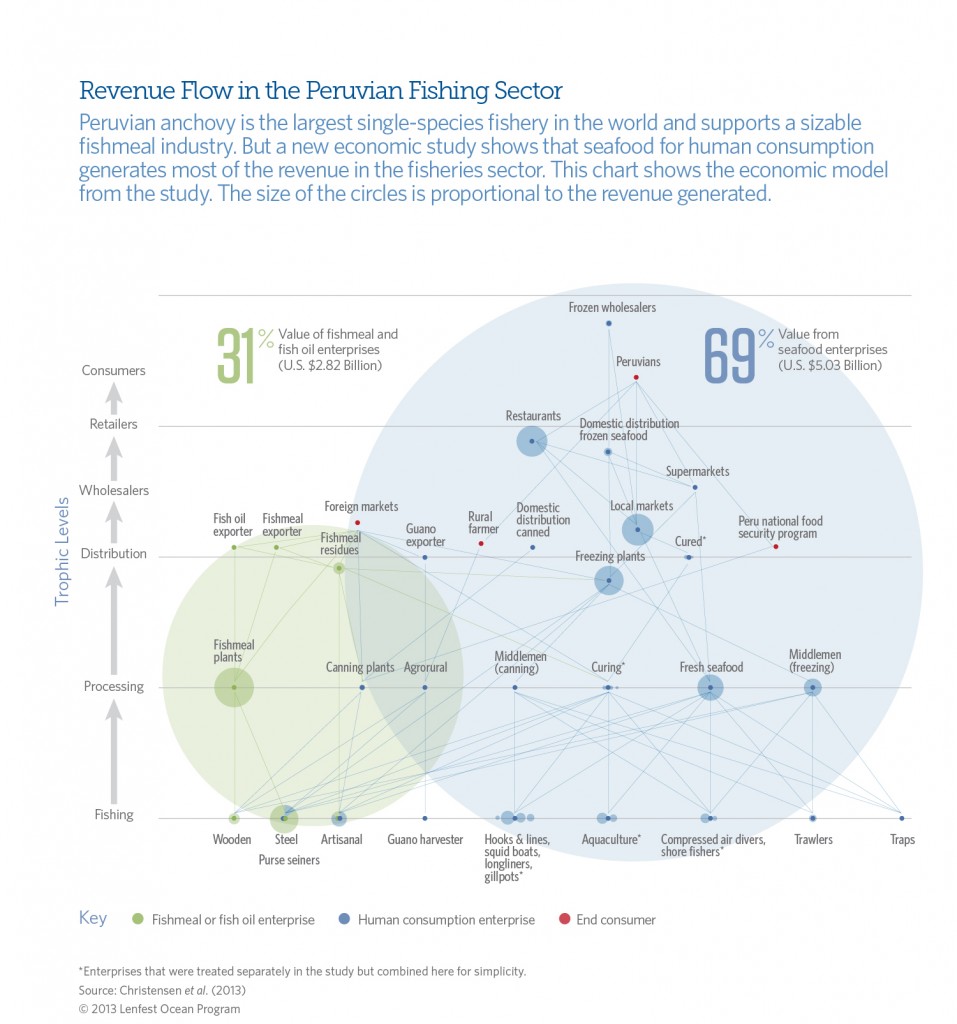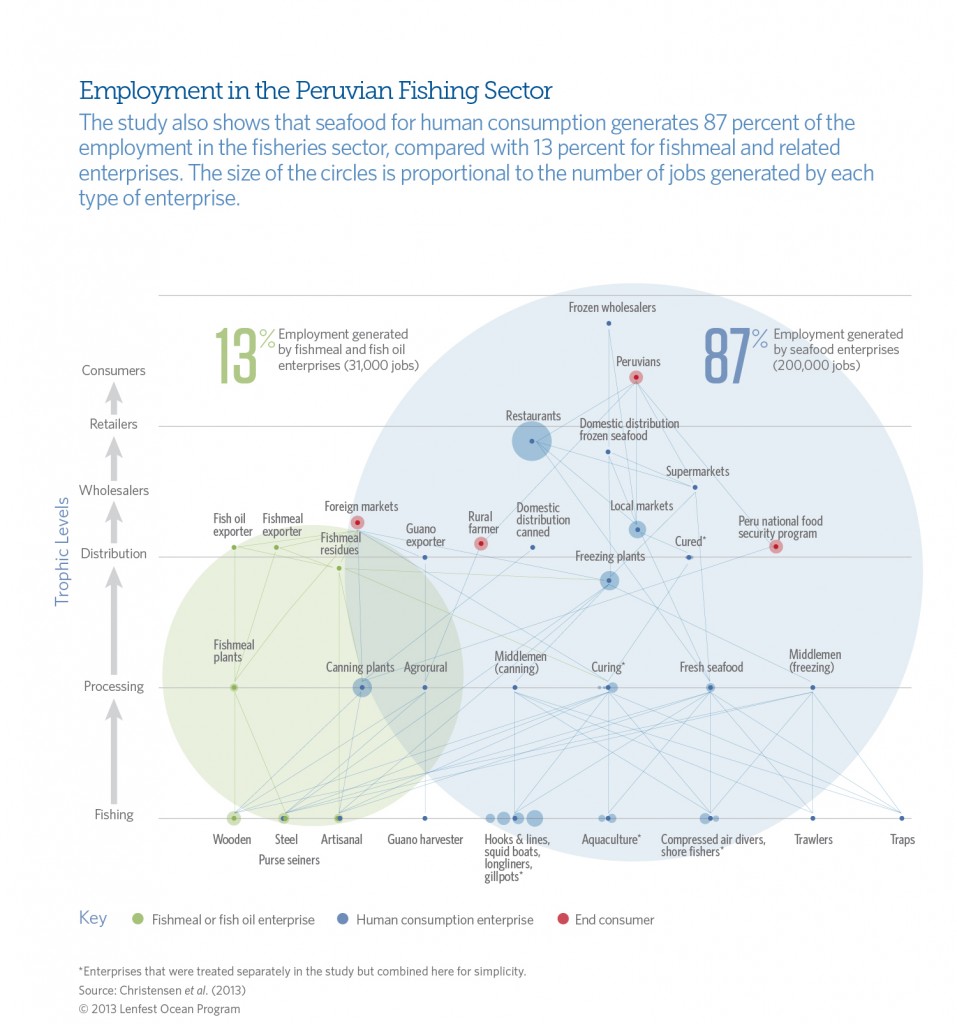reposted from



Home / 2013 / November / 13 / Don’t hold the anchovies: Study shows Peruvian fish worth more as food than as feed
Don’t hold the anchovies: Study shows Peruvian fish worth more as food than as feed
Media Release | November 13, 2013
Rethinking the potential of anchovies could pay big dividends for the Peruvian fishing industry. Photo: aul Asman and Jill Lenoble, Wikimedia Commons.
The true potential of Peruvian anchovy lies not in fishmeal but as food for people and as part of the ocean food web, according to Canadian and Peruvian researchers.
The Peruvian anchovy is the world’s biggest fishery resource, with annual landings of five to 10-million metric tons. It generates up to one-third of the world’s fishmeal supply. But a new study reveals the bulk of the revenue and employment comes from producing the seafood for human consumption.
“Anchovy accounts for upwards of 80 per cent of Peruvian landings by weight, but it’s only responsible for 31 per cent of the sector’s revenue,” says Villy Christensen, a professor in the University of British Columbia Fisheries Centre. “It hasn’t lived up to its true economic value because almost all of it is ground up for low-value fish oil or fishmeal.”

Fishing in Peru is often associated with industrial-scale catch of anchovies. (Photo: Patricia Majluf)
Christensen and colleagues at the Centre for Environmental Sustainability (CSA) at Cayetano Heredia University in Peru calculated the economic impact of anchovy and other Peruvian fisheries. They found that artisanal fishers, wholesalers, markets and restaurants generated US$2.4 billion per year, or 69 per cent of total revenue.
Meanwhile, the fishmeal industry generated only $1.1 billion, or 31 per cent of revenue. Similarly, of all the jobs supported by fishing in Peru, more than 80 per cent were part of the seafood industry. Details are published in the current issue of the journal Marine Policy.
“Current Peruvian regulations only allow anchovy caught by artisanal or small boats to be used for human consumption, forcing the majority of the landings to be exported as fishmeal,” says Patricia Majluf, CSA Director and the project’s Peruvian lead.
Video: Prof. Patricia Majluf summarizes findings of the study. (Video en español)
“There are far more economic and food security benefits to Peru to channel fisheries for human consumption,” adds Majluf, who launched a campaign in 2006 to encourage Peruvian chefs to incorporate anchovy on their menus. “We need to reform our laws to allow anchovy fishery to reach its full economic potential.”
NB: Infographics, video and study summary are available at http://news.ubc.ca/2013/11/13/peruviananchovy.

Infographic: Revenue flow in the Peruvian fishing sector (Christensen et al). Click thumbnail to enlarge/download.

Infographic: Employment in the Peruvian Fishing Sector. (Christensen et al) Click to enlarge/download

No comments:
Post a Comment